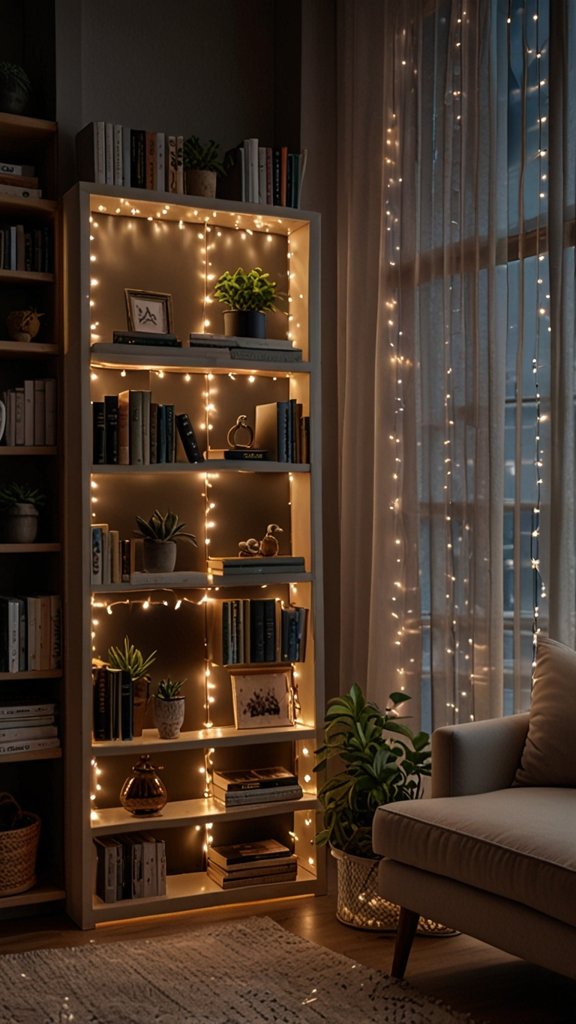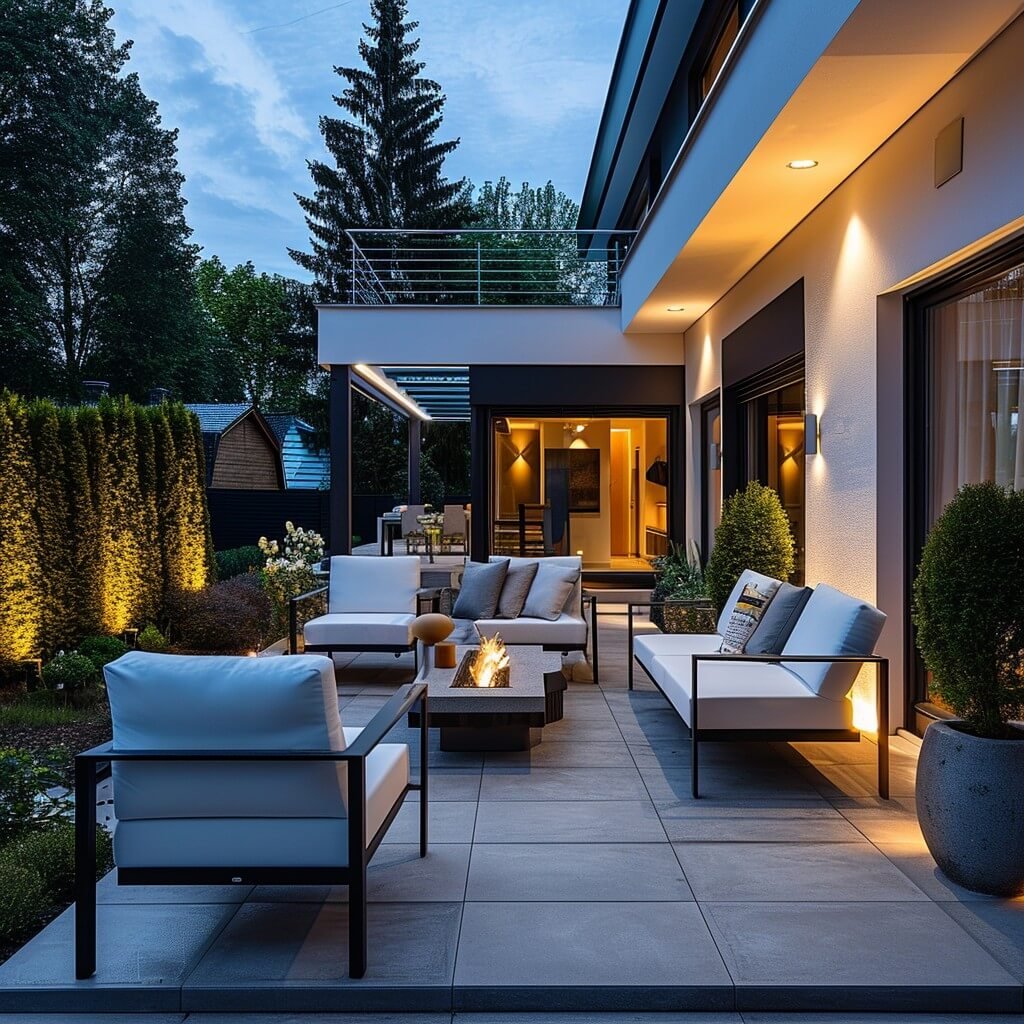
Choosing the perfect solar Deck Lighting for your outdoor space does have to be a problem. Having helped countless homeowners navigate the steps to determine the Best Solar Deck Lighting for their outdoor space, I’m excited to share everything I’ve learned.
Did you know that solar-powered outdoor lighting can slash your energy costs by up to 75% compared to traditional electrical lighting?
These are all part of the reasons why solar deck lighting has become increasingly popular among homeowners.
Ways to Choose the Best Solar Deck Lighting and Types Of Deck Lights?
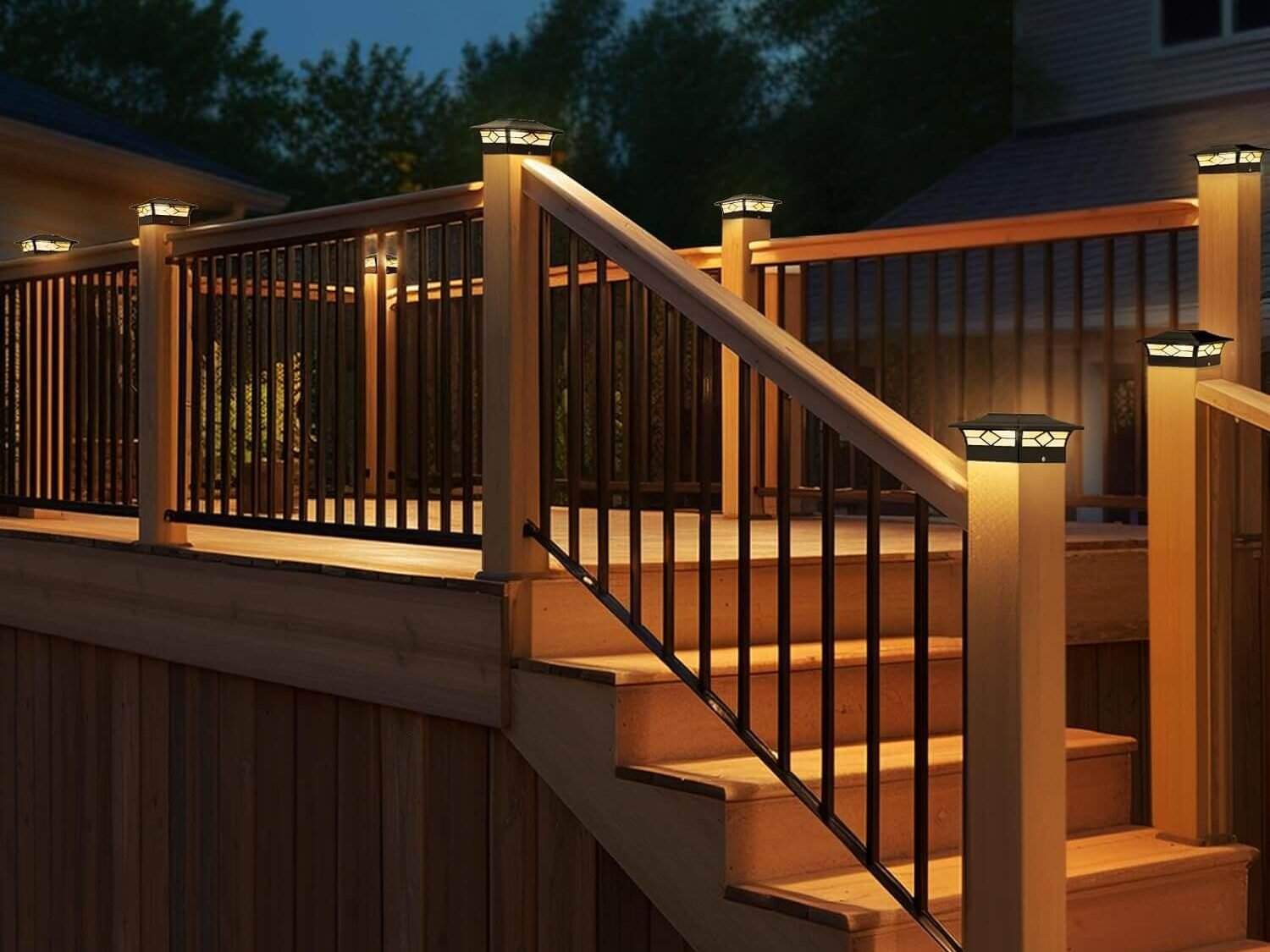
Post Cap Lights
Post-cap lights are the cornerstone of deck lighting design.
These versatile fixtures sit atop your deck posts, providing illumination and decorative appeal.
With proper maintenance, Quality post-cap lights can last up to 5,7 years.
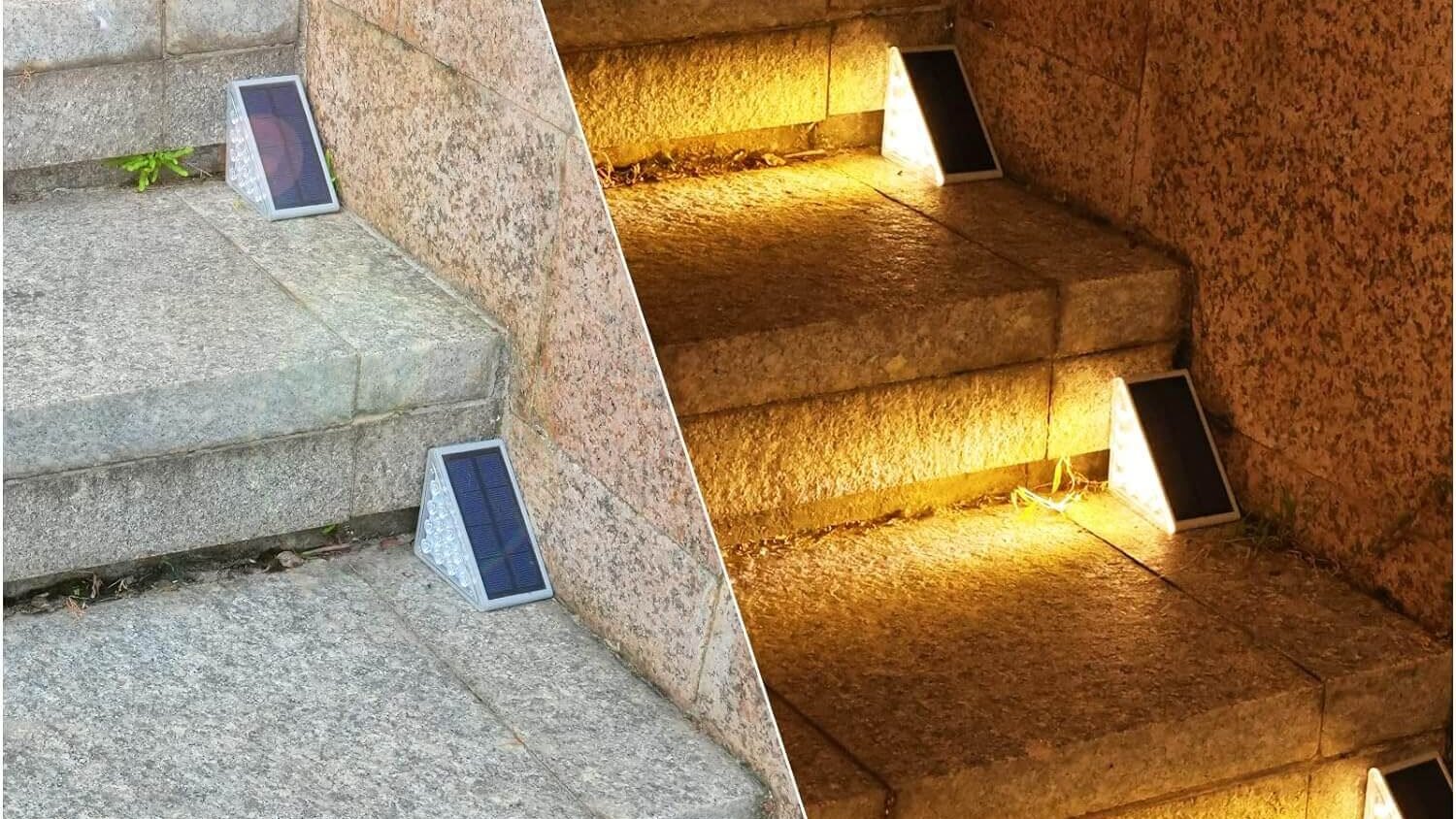
Step Lights
Safety should always be your top priority! Step lights are essential for preventing accidents during evening hours.
They’re typically installed on the vertical faces of deck stairs, creating a subtle but effective pathway illumination.

String Lights
Creating a perfect party atmosphere can easily be done with String lights.
These versatile solar-powered options can be hung above your deck or woven through railings to create a magical ambiance.
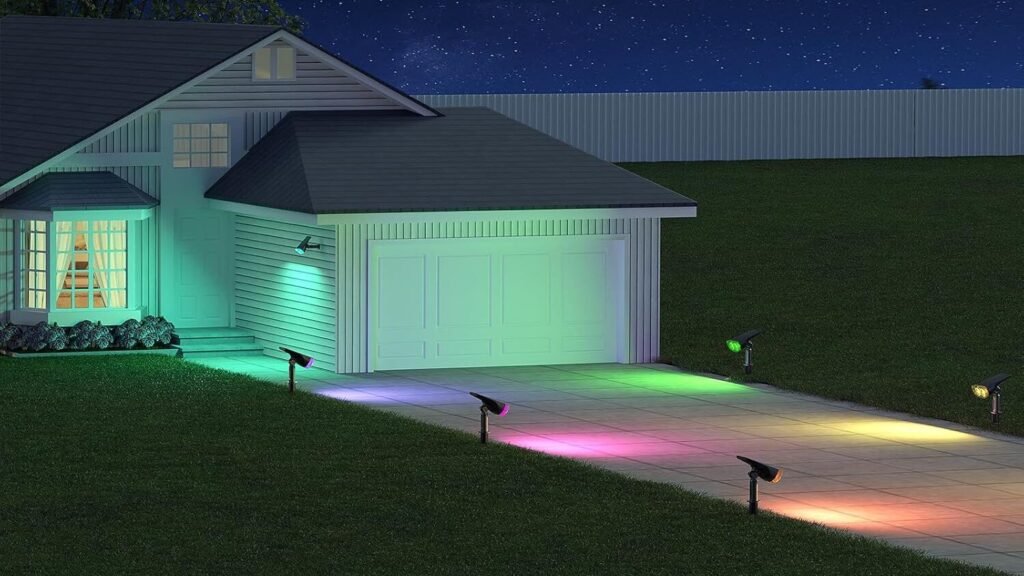
Spotlights
Spotlights are used to highlight specific features or create dramatic shadows.
They’re particularly effective for illuminating architectural elements or landscapes near your deck.
Flush-Mount Deck Lights
These sleek options integrate directly into your deck surface, creating a modern, sophisticated look without any tripping hazards.
Comparative Analysis: Solar Deck Light Types
| Light Type | Typical Brightness (Lumens) | Average Battery Life | Best Use Case | Installation Difficulty | Price Range |
|---|---|---|---|---|---|
| Post Cap | 25-50 | 8-12 hours | Perimeter lighting | Easy | $15-40/piece |
| Step Lights | 15-30 | 6-10 hours | Safety lighting | Moderate | $10-30/piece |
| String Lights | 5-15 per bulb | 6-8 hours | Ambient lighting | Easy | $20-60/set |
| Spotlights | 50-200 | 8-12 hours | Feature highlighting | Easy | $25-80/piece |
| Flush-Mount | 10-30 | 6-10 hours | Subtle illumination | Difficult | $20-50/piece |
Key Features to Consider
Solar Panel Efficiency
The heart of any solar light is its panel.
Look for monocrystalline panels – they’re more expensive but offer superior efficiency, especially in lower-light conditions.
The latest models can convert up to 23% of sunlight into usable energy!
Battery Life and Storage
Most modern solar lights use lithium-ion batteries, offering improved performance over older NiMH batteries. Here’s what to look for:
- Minimum 2000mAh capacity
- At least 8 hours of runtime
- Quick charging capability (4-6 hours)
- Over-charging protection
Weatherproofing and Durability
When investing in solar deck lighting, weatherproofing isn’t just a nice-to-have feature – it’s essential!
Your outdoor lights will face everything from scorching sun to freezing rain, so understanding weatherproofing ratings and materials is crucial for making a smart purchase.
Understanding IP Ratings
IP (Ingress Protection) ratings are essential when evaluating weatherproof qualities. Think of them as your lights’ shield against the elements!
Here’s what you need to know about each rating:
IP65: The Minimum Standard
- Protected against all dust ingress
- Can withstand water jets from any direction
- Suitable for: Basic deck installations in moderate climates
- Ideal for: Covered deck areas and mild weather regions
- Price range: $15-30 per light
IP67: The All-Weather Champion
- Complete dust protection
- Can handle temporary water immersion (up to 30 minutes)
- Suitable for: Open decks in areas with heavy rainfall
- Ideal for: Most residential deck applications
- Price range: $25-45 per light
IP68: The Waterproof Wonder
- Maximum dust protection
- Continuous water immersion capability
- Suitable for: Poolside decks and water feature areas
- Ideal for: Coastal locations and flood-prone regions
- Price range: $35-60 per light
IP Ratings for Deck Lights
Material Considerations
Your lights’ housing material is just as important as their IP rating. Here’s what I’ve learned from years of installation experience:
Aluminum Housing
- Pros: Lightweight, excellent heat dissipation, corrosion-resistant
- Cons: Can be more expensive
- Best for: Long-term installations in humid climates
- Lifespan: 8-10 years
Stainless Steel Components
- Pros: Maximum durability, premium appearance
- Cons: Higher cost, can show water spots
- Best for: Coastal areas with salt spray
- Lifespan: 10-15 years
ABS Plastic
- Pros: Affordable, lightweight, never rust
- Cons: Can become brittle over time
- Best for: Budget-conscious installations in moderate climates
- Lifespan: 5-7 years
Climate-Specific Considerations
Different climates require different approaches to weatherproofing:
Coastal Areas:
- Choose IP67 or IP68 rated lights
- Opt for stainless steel or marine-grade aluminum
- Look for UV-resistant materials
- Consider salt-spray-rated fixtures
Cold Climates:
- Select lights with cold-weather-rated batteries
- Choose impact-resistant materials
- Look for snow and ice-shedding designs
- Ensure sealed housing with thermal protection
Hot, Sunny Regions:
- Prioritize UV-resistant materials
- Choose lights with heat-dissipating designs
- Look for drought-resistant seals
- Consider lights with built-in temperature regulation
Pro Tips for Maximum Durability
Installation Best Practices:
- Apply silicone sealant around mounting points
- Use stainless steel screws and fixtures
- Install drainage gaps where needed
- Position lights at slight angles to prevent water pooling
Seasonal Protection:
- Apply UV protectant spray annually
- Check and replace seals as needed
- Clean fixtures seasonally
- Inspect for water ingress regularly
Common Weatherproofing Issues and Solutions
| Issue | Cause | Solution | Prevention |
|---|---|---|---|
| Foggy Lenses | Seal failure | Replace seals, add desiccant | Regular seal inspection |
| Corrosion | Water ingress | Clean and reseal | Better initial sealing |
| Battery Damage | Moisture exposure | Replace battery housing | Higher IP rating selection |
| Solar Panel Degradation | UV damage | Replace panel | Choose UV-resistant models |
Investment Considerations
While weatherproof lights may cost more initially, they offer significant savings over time:
- Standard lights (IP65): Replace every 2-3 years
- Weather-resistant (IP67): Replace every 4-5 years
- Waterproof (IP68): Replace every 6-8 years
The math is clear investing in better weatherproofing always pays off!
A quality IP67 or IP68-rated light might cost 30-50% more upfront but can last twice as long as a basic IP65 model.
Installation Tips for Maximum Weather Protection
1. Create drainage paths
- Drill small weep holes where needed
- Ensure water can’t pool around fixtures
- Position lights at a slight angle
2. Seal all connection points
- Use marine-grade silicone
- Apply rubber gaskets
- Check seals annually
3. Position for protection
- Avoid direct water exposure where possible
- Consider partial coverage options
- Plan for extreme weather events
The best weatherproofing comes from combining the right IP rating, appropriate materials, and proper installation techniques.
Don’t skimp on any of these aspects if you want your solar deck lighting to last for years.
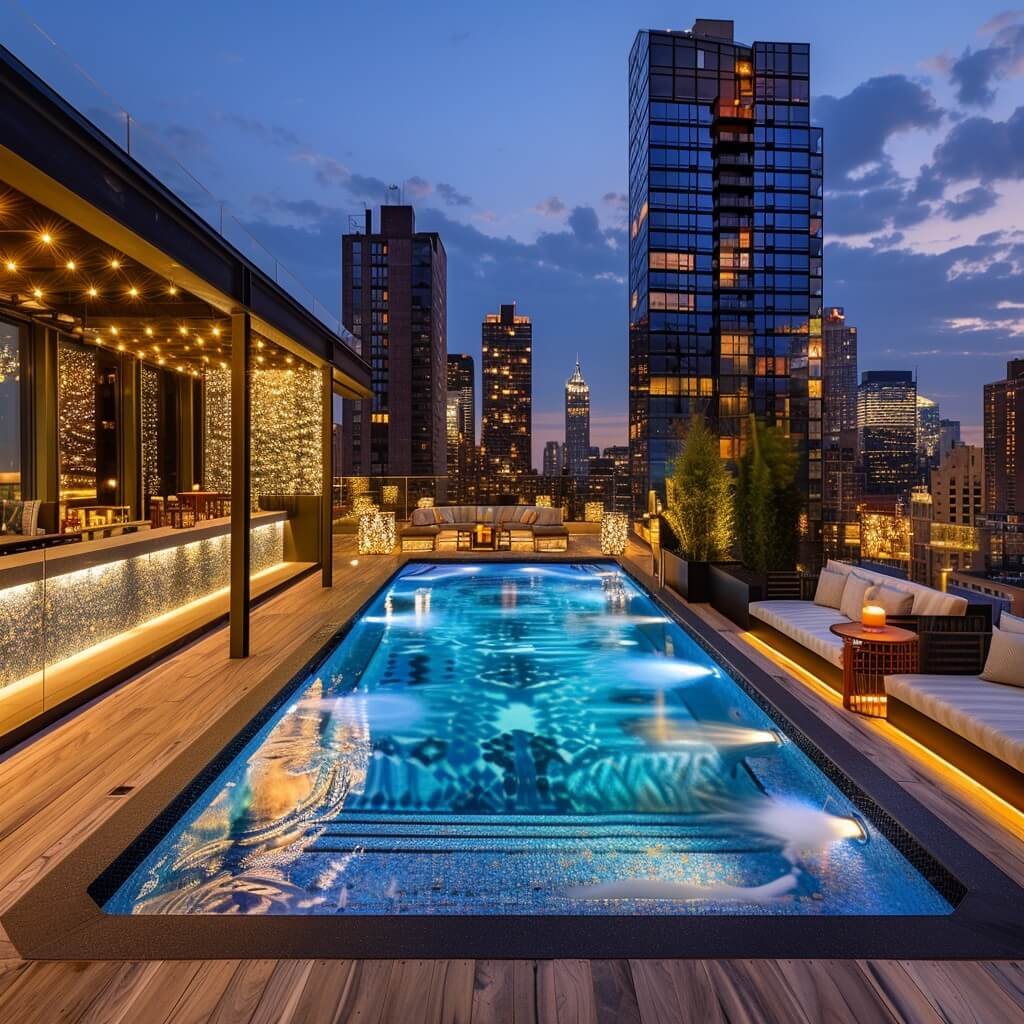
Installation Strategy Of Solar Deck Lights
Optimal Placement
The success of your solar deck lighting largely depends on proper placement.
Here’s my tried-and-tested approach:
- Map Your Sun Exposure
- Track sunlight patterns throughout the day
- Note any consistent shade areas
- Consider seasonal sun position changes
- Create Lighting Zones
- Primary navigation areas (steps, entries)
- Ambiance zones (seating areas, dining spaces)
- Feature highlighting (plants, architectural elements)
- Space Planning For optimal coverage, follow these spacing guidelines:
- Post caps: One per post
- Step lights: Every 4-6 feet
- String lights: 2-3 feet between bulbs
- Spotlights: 8-10 feet apart
Installation Tips
- Clean mounting surfaces thoroughly
- Use marine-grade sealant for any screw holes
- Ensure solar panels face south when possible
- Angle panels at 45 degrees for maximum exposure
Smart Features and Integration Of Solar Deck Lights
Modern Connectivity Options
Today’s solar deck lights often come with smart features that enhance both functionality and convenience:
- Bluetooth connectivity for individual control
- WiFi integration for automated scheduling
- Motion detection capabilities
- Color temperature adjustment
- Weather-responsive programming
Smart Control Systems
Maintenance and Longevity
Seasonal Care Schedule
- Spring: Clean panels, check seals
- Summer: Monitor charging efficiency
- Fall: Clear debris, adjust timers
- Winter: Remove snow, check batteries
Troubleshooting Common Issues
- Reduced Runtime
- Clean solar panels
- Check for battery degradation
- Verify charging conditions
- Inconsistent Operation
- Inspect wiring connections
- Test motion sensors
- Update smart system settings
Cost Analysis and ROI
Initial Investment
Quality solar deck lighting typically requires an upfront investment, but the long-term savings are significant:
- Basic setup (10-15 lights): $200-400
- Mid-range system (15-25 lights): $400-800
- Premium system (25+ lights with smart features): $800-1500
Long-term Savings
Compare this to traditional electrical lighting:
- No electrical bill increase
- Zero wiring costs
- Minimal maintenance expenses
- Average ROI period: 2-3 years
To more about how much you can save by switching to solar in your lighting check out our free solar lighting savings calculators
Conclusion
Choosing the right solar deck lighting is about balancing aesthetics, functionality, and efficiency.
By considering factors like light type, brightness needs, durability requirements, and smart features, you can create the perfect outdoor lighting solution for your space.
Always remember to factor in your local climate and typical weather patterns when making your final selection.
Pro Tips for Success:
- Start with essential safety lighting first
- Add ambient lighting second
- Finish with accent and feature lighting
- Always buy extra batteries
- Keep your receipt for warranty claims

